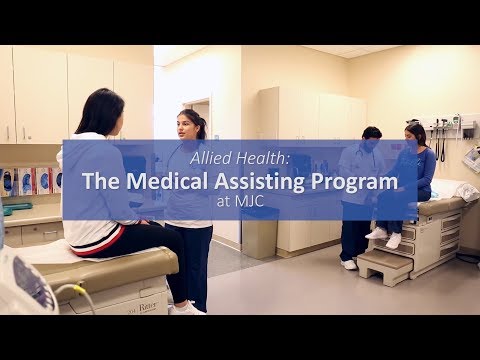Dermatology Jobs for Medical Assistants
Contents [show]
Medical assistants who are interested in dermatology can find plenty of job opportunities by pursuing a career in this field. Dermatology offices are always in need of qualified Medical assistants to help with patient care and other office duties.
Checkout this video:
What is a dermatology medical assistant?
Dermatology Medical Assistants perform a variety of tasks in dermatologists’ offices, including patient care, administrative duties, and clinical tasks. They may also be responsible for scheduling appointments, handling insurance paperwork, and assisting with office procedures.
The duties of dermatology medical assistants vary depending on the size of the practice and the needs of the patients. In some cases, they may be responsible for taking patient medical histories and vital signs, as well as preparing them for examination. They may also be responsible for instructing patients on how to care for their skin after procedures. In larger practices, they may have more specialized roles, such as working with lasers or performing minor surgeries.
What are the responsibilities of a dermatology medical assistant?
Dermatology medical assistants have a variety of responsibilities. They may be responsible for scheduling appointments, taking medical histories, preparing patients for examination, and assisting the dermatologist during procedures. They also may apply topical medications and perform other diagnostic tests. In some states, they may even be allowed to administer injections under the supervision of a licensed physician.
What are the qualifications for a dermatology medical assistant?
Education: You’ll need at least a high school diploma to work as a medical assistant although many employers prefer applicants who have completed postsecondary education, such as a certificate or an associate’s degree in medical assisting. Some programs take as little as six months to complete, while others may take up to two years.
Licensure: You are not currently required to be licensed or certified to work as a medical assistant in the U.S., although this may change in the future. Some states have voluntary certification programs for medical assistants.
Skills: In addition to having a strong interest in dermatology and medicine, you’ll need excellent communication, interpersonal, and organizational skills to succeed in this role. Medical assistants must be able to take accurate medical histories and vital signs, explain treatment options to patients, and assist physicians with diagnostic procedures and treatments.
What are the hours like for a dermatology medical assistant?
While the hours for a medical assistant can vary depending on their place of employment, most medical assistants working in dermatology offices can expect to work during regular business hours. Depending on the size of the practice, they may also be required to work some evenings or weekends to accommodate patients with busy schedules. Most medical assistants in dermatology practices work full time, averaging about 40 hours per week.
What is the pay like for a dermatology medical assistant?
Medical assistants working in dermatology offices can expect to earn a salary that is slightly higher than the average for all medical assistants. The median annual salary for a dermatology medical assistant was $35,000 in 2017, according to the US Bureau of Labor Statistics.
What are the benefits of being a dermatology medical assistant?
Dermatology medical assistants have a few more responsibilities than the average medical assistant. In addition to completing administrative tasks and providing basic patient care, they also help dermatologists with procedures, apply treatments, and instruct patients on how to properly care for their skin.
While the work can be challenging, there are also many rewards. Here are just a few of the benefits of being a dermatology medical assistant:
1. You get to help people feel better about themselves.
2. You learn a lot about skin conditions and treatments.
3. You work in a relaxed environment.
4. You have the opportunity to build relationships with patients.
What is the job outlook for dermatology medical assistants?
The job outlook for dermatology medical assistants is very good. Employment of medical assistants is projected to grow 19 percent from 2016 to 2026, much faster than the average for all occupations.1 The demand for medical assistants will continue to increase as the number of older adults grows and more older adults visit federally qualified health centers for care.
With an aging population, the number of skin conditions requiring treatment is expected to rise. The growing prevalence of skin conditions, such as melanoma and non-melanoma skin cancer, will contribute to the demand for dermatologists and dermatology medical assistants.
Dermatology medical assistants typically have an associate degree or postsecondary certificate in medical assisting. Although not required, certification can demonstrate competence and may help lead to employment. Certification for medical assistants is available from several organizations, including the National Healthcareer Association and the American Medical Technologists.
What are some skills that dermatology medical assistants need?
Dermatology medical assistants need to bedetail oriented and have excellent customer service skills. They also need to be able to work independently and be able to handle a fast-paced work environment.
What are some common challenges that dermatology medical assistants face?
As a dermatology medical assistant, you will have a lot of responsibilities. You will be responsible for greeting patients, scheduling appointments, taking patient medical histories and processing insurance paperwork. You will also assist the dermatologist with procedures, help to maintain a sterile environment in the office and laboratory and provide patient education.
While working in dermatology can be very rewarding, it can also be challenging. Dermatologists see patients with a wide variety of conditions, many of which are chronic and require lifelong treatment. This can be emotionally challenging for both the patient and the medical assistant. In addition, because dermatologists often deal with cosmetic concerns, there can be a lot of pressure to provide perfection.
Another challenge that dermatology medical assistants face is keeping up with the latest trends and technologies. Dermatology is a rapidly changing field, and new treatments and technologies are being developed all the time. As a result, dermatology medical assistants need to be able to quickly learn new things and adapt to change.
What are some tips for succeeding as a dermatology medical assistant?
There is no one-size-fits-all answer to this question, as each medical assistant’s situation is unique. However, there are some general tips that may help you succeed in a dermatology medical assistant role.
Some of the key skills that dermatology medical assistants need to succeed include excellent customer service skills, strong attention to detail, and good organizational and multitasking abilities. Additionally, it is important to be able to work well under pressure and have a positive attitude.
If you are interested in pursuing a career as a dermatology medical assistant, it is important to research the field and gain experience in customer service and other relevant fields. Additionally, it is helpful to network with professionals in the field and take courses or earn certification in medical assisting.







